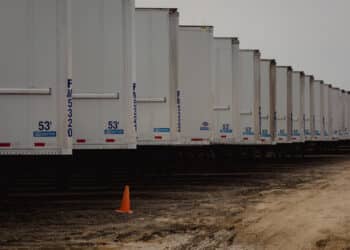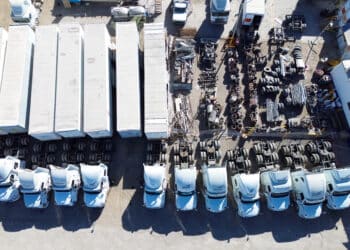The merger between Mitsubishi Fuso and Hino announced this week aims to create a commercial vehicle juggernaut in the Asia-Pacific region, but sales and financing arrangements at the new company are unknown.
Daimler Truck and Toyota Motor finalized agreements to merge Mitsubishi Fuso and Hino into a jointly owned, publicly listed truck company by April 2026, creating a 40,000-employee commercial vehicle giant across Asia-Pacific and beyond, according to the June 10 joint announcement. Daimler and Toyota intend to each hold 25% of the new holding company, with the remaining 50% offered via an initial public offering.
It is too early to know the specifics about the planned integration, such as financing arrangements to come, as the new holding company will not begin operations until April 2026, a Mitsubishi Fuso company spokesperson told Equipment Finance News.
“The new company will engage and contribute to all its stakeholders, including customers and various automotive industry players, and help to solve various issues in the commercial vehicle industry,” they said. “At the same time, Hino and Mitsubishi Fuso will carefully protect the renowned brands that are used by our customers.”
Financial implications post-merger
For perspective on the new company’s size post-merger, its fiscal year 2024 revenue would total 1.5 trillion yen ($16.3 billion), with $10.5 billion coming from Hino and $5.8 billion coming from Daimler Truck’s Truck Asia segment, which includes Mitsubishi Fuso, according to the companies’ respective earnings releases. Fiscal year 2025 revenue is forecast at $17.5 billion, according to EFN’s analysis of a June 10 Jefferies research note.
If Fuso is valued at about $2.8 billion, similar to Hino’s valuation, Daimler would need to receive around $1.2 billion in cash to reduce its stake to 25%, according to the Jefferies note. Meanwhile, Hino’s $864 million in expected fines for emissions data falsifications is now reflected as a projected cash outflow between 2025 and 2028.
Trucks Asia previously combined Mitsubishi Fuso Truck and Bus Corporation (MFTBC) and Daimler India Commercial Vehicles (DICV), but as of 2025, DICV and China operations have been incorporated into Mercedes-Benz, according to the Jefferies research note. The formation of the joint venture and its eventual listing will effectively dissolve Trucks Asia, with earnings before income tax expected to decline by 5%, while group margins are projected to rise by 50 basis points.
Through the merger, the new company would become one of the strongest in the Asia-Pacific region, Karl Deppen, head of Daimler Trucks Asia, CEO of Mitsubishi Fuso and designated CEO of new holding company, said in the June 10 release.
“We are shaping the industry by bundling our strengths,” he said. “With a strong new company we combine our two trusted brands, our resources, competencies and expertise to even better support our customers in their transportation needs in the future.”
Editor’s note: All amounts have been converted to U.S. dollars.









